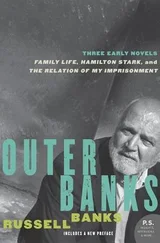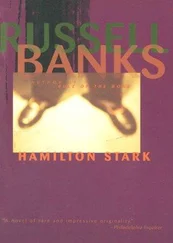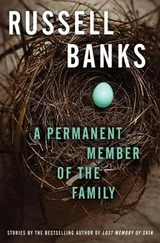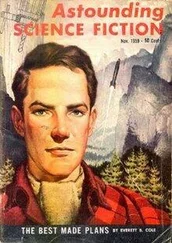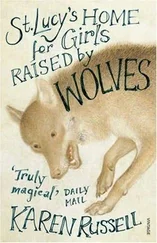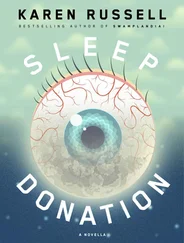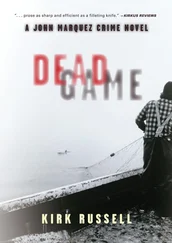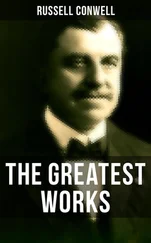Mom wasn’t the only Bigtree wrestler we were missing. Grandpa Sawtooth had vanished that year, too. He was still alive, but the Chief had exiled him to the mainland about a month before Mom died. The Chief had installed Grandpa Sawtooth in an assisted-living facility called the Out to Sea Retirement Community — a temporary thing, the Chief had assured us kids. Just until we “tied up some loose ends” on our island. We missed Grandpa but he didn’t miss us. During his last days on the island he had more than once gotten lost inside our house. He still knew our names, sometimes, but he could not match them to our faces; his memory winked on and off with the weird, erratic energy of a lightbulb in a torment. We had seen Grandpa Sawtooth exactly once since his move: a few weeks after he got “settled in,” we spent twenty-two minutes in his cabin at the Out to Sea facility. Through Grandpa’s porthole you could see the abridged ocean, lassoed in glass, and a low stone seawall. Inside the retirement boat, no music played, no living lizards curled tails along the walls, and the lights were halogen. The Chief kept promising us another trip to Loomis to visit him: “As soon as I muck out the Gator Pit, kids …” “As soon as I get a cage and rigging done on that airboat …” By December, we’d stopped asking.
I remember clearly the first time I saw the face of our enemy — it was on a Thursday in January, ten months and two weeks after Mom’s death. A huge thunderstorm had rolled over the islands that afternoon, and the living room was unusually dark. I had been lulled into a half-awake state by an I Love Lucy marathon on channel 6. Grandpa’s rabbit-eared TV was crackling like water, and I kept dozing off on the couch and getting my senses all tangled, dreaming that the storm had moved inside. Then the TV screen went entirely black, and a baritone voice intoned: “The World of Darkness comes to Loomis!” I was glued to the set: plaid-vested schoolchildren lined up to enter the gaping doors of what appeared to be a giant amusement park. The camera followed them down a narrow walkway — the “Tongue of the Leviathan!” an announcer called it. The Tongue appeared to be a sort of thirty-foot electric-traction escalating slide, covered in sponge and pink mesh, visibly slick; it gulped whole grades of kids into the park. The camera zoomed forward to give a teaser glimpse of the interior of the Leviathan: a scale model of a whale’s belly, lit up by a series of green lights on a timer, so that it looked to my untrained eye like some kind of alien cafeteria. Then the TV flashed to a keyhole peek of riders disappearing down the Tongue. For a few seconds the screen went black again and the TV speakers burbled with “cetaceous noises of digestion.” Then schoolkids screaming “We love the World!” on somebody’s cue disappeared down a neon tube.
“Christ Jesus,” said the Chief, “how much do you think this piece-of-shit commercial cost?” Swamplandia! had never done a TV spot.
The World of Darkness was located in southwest Loomis County, just off the highway ramp. The camera pulled back to reveal imbricating parking lots, a whole spooling solar system of parking lots. On its western edge, the Leviathan touched a green checkerboard of suburban lawns. A moat of lava lapped at the carports, the houses at the World’s perimeter looking small and vexed. The World of Darkness offered things that Swamplandia! could not: escalator tours of the rings of Hell, bloodred swimming pools, boiling colas. Easy access to the mainland roads.
“Can the World of Darkness really do that, Chief?” I asked my dad. “Move right into the middle of a city?”
The Chief had stopped watching. He was draining a Gulch brandy and cola in the deep crease of our couch. “Don’t let me catch you falling for that bullcrap, Ava. Who is going to pay a day’s wage to slide down a damn tongue ? That’s about the stupidest thing I ever heard of. You go touch your Seth’s belly scales and remind yourself who’s got the real leviathans …”
One Tuesday in late January, just a week or two after the World of Darkness’s grand opening, the morning ferry failed to show. On an ordinary weekday, the double-decker ferry departed from the Loomis County Ferry Port at 9:05 and arrived at our park’s landing a few minutes after ten o’clock. This orange boat linked Swamplandia! to the mainland; we had no bridge system and no road access. So the ferry was our lifeline, the only way for tourists to get to our park. The twenty-six-mile trip took forty minutes in good weather, and could take as much as an hour and a half in rough water. The service was a vestige from the frontier days, when it connected a handful of drifters and homesteaders scattered throughout the Ten Thousand Islands to the mainland. The majority of the Ten Thousand Islands were still uninhabited, and there were just four stops on the original thirty-five-mile loop: Swamplandia! Gallinule Key, Carpenter Key, and the Red Eagle Key Fishing Camp. Our nearest neighbors, Mr. and Mrs. Gianetti, had an avocado farm on Gallinule Key, a fifteen-minute airboat ride to the south.
The Chief was on all fours when I found him. He was in the empty stadium, making some adjustment to the Pit pump. He was wearing a mainland T-shirt that said ALABAMA CARDINALS — this was from his “civilian” wardrobe. Without his radiant ropes and beads and feathers, you could see his pale scalp through a scrim of scant black hair. Color had ripened in twin spots on his stubbled cheeks, which made him look a little like a haggard Shirley Temple.
The Chief had to drain and clean the Pit every ten days because the Seths were undainty eaters; we fed them a commercial diet, which we ordered from Louisiana breeders, mostly chicken and fish but occasionally more whimsical proteins: frozen nutria, muskrat, beaver, horse. The Seths regurgitated bones and feathers. Once, after a hurricane, we pulled the bars of a tiny rib cage out of the leafy deep end — they were a crumbly, dark-honey color. Forensic arguments erupted over green peas and meat loaf at our own table:
“A Key deer, Sammy!” shouted Grandpa.
“Na-uh, Pops,” the Chief disagreed. “My guess, those bones belong to a dog. Some poor mutt went for a swim … pass the gravy, honey?”
On Live Chicken Thursdays, a very popular and macabre attraction, the Seths jumped five feet out of the Pit to snatch the cloud-white hens suspended above them, tied by their talons to a clothesline. The Seths drowned and ate these chickens in an underwater cyclone called the Death Roll while tourists snapped photographs. Live Chicken Thursday was a Bigtree tradition dating back to 1942. The ritual was Grandpa Sawtooth’s brainchild. I think my family traumatized generations of children and old women. And we girls must have inherited our forebears’ immunity to gore, because Ossie and I could eat PB&J sandwiches during a Death Roll, no problemo.
“There now.” The Chief gave a satisfied grunt as clear bubbles shot forth again, some clicky mechanism having reset itself. He knelt over the edge of the Pit. A few Seths swam calmly around the underwater platform that the Chief just had been standing on; his tool belt was still jerked up beneath his soaked armpits.
“Chief!” I said, bounding over. “Dad, the ferry never showed …”
He looked up with a blind, irritated glare — the sun was behind me but I was too short to block it. His arms were gloved in filth up to the elbows.
“Ava, you can’t see I’m busy? Gus Waddell called from the docks. The ferry isn’t coming today because Gus Waddell didn’t have any passengers.”
“Do you want me to go check the TV, to see if something bad happened on the mainland?”
“Ava Bigtree,” he said. “You are making me truly crazy. You can watch TV if you want.”
Читать дальше

